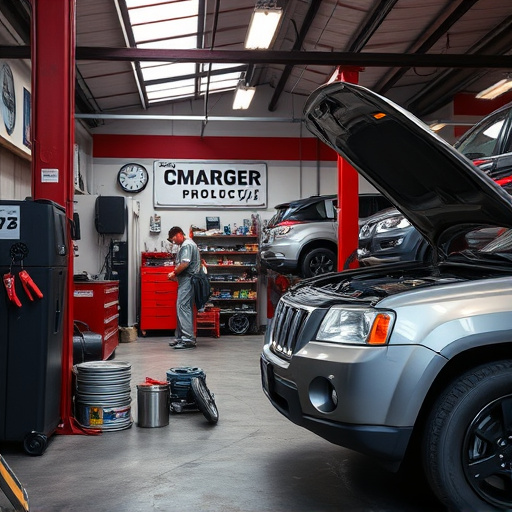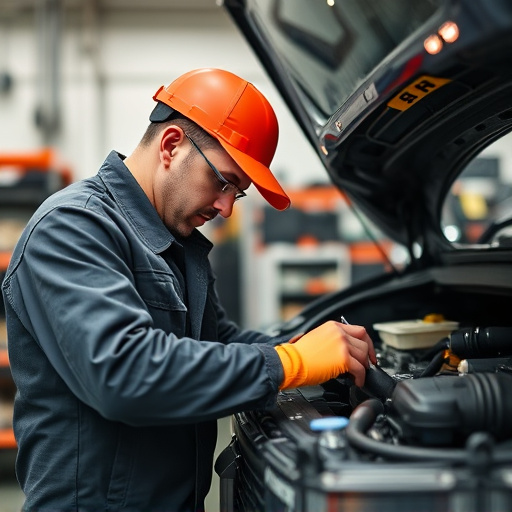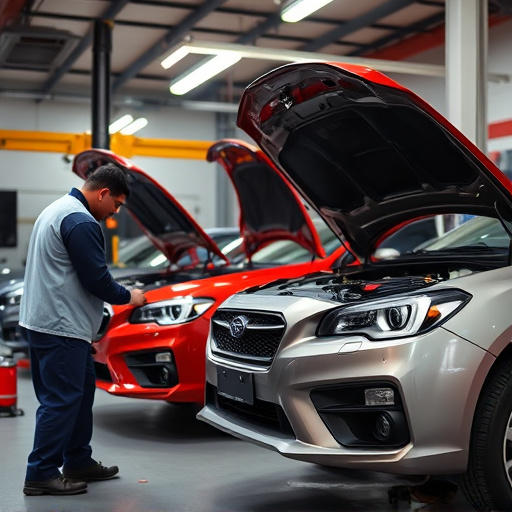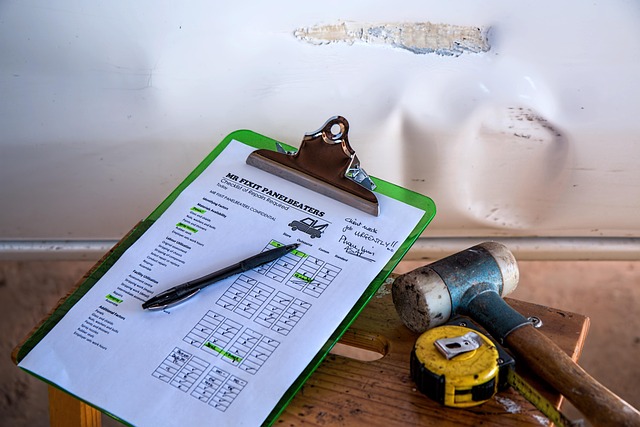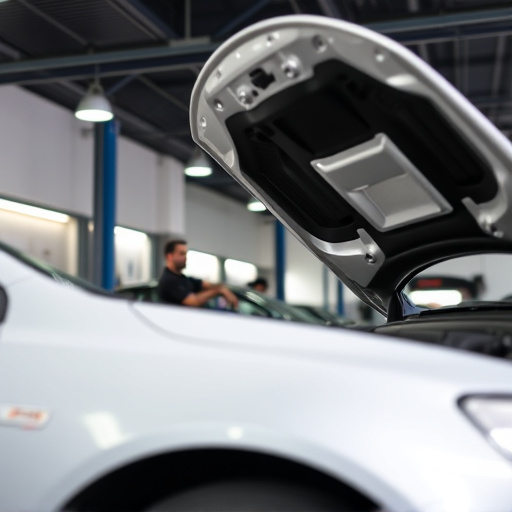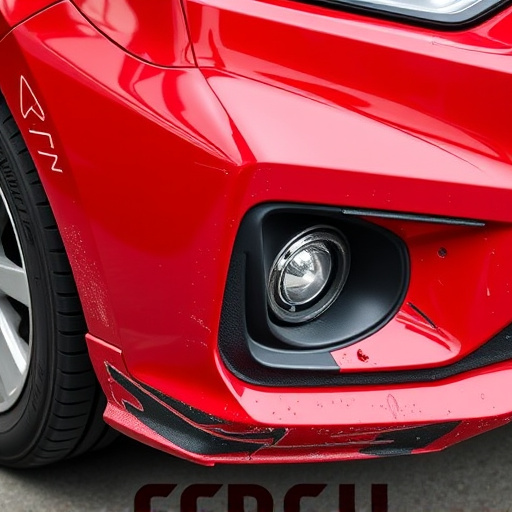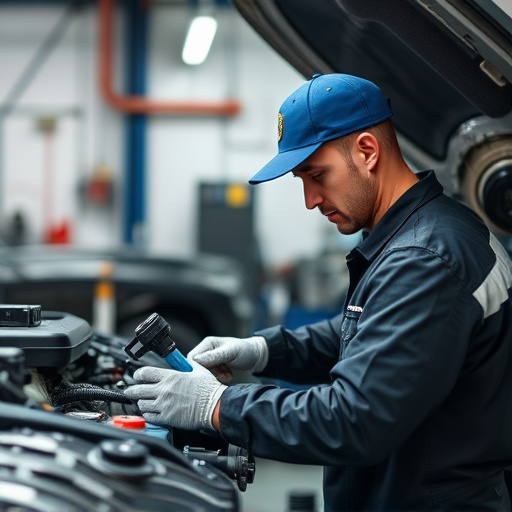The traditional auto body repair process poses significant environmental challenges due to waste generation and toxic chemical usage. There is a growing need for a greener approach that minimizes waste, reduces chemical reliance, and adopts eco-friendly alternatives. The industry is transforming with recycled metals, biodegradable plastics, natural fiber composites, spot welding, 3D printing, water-based paints, and energy-efficient systems. These innovations reduce air pollution, greenhouse gas emissions, and waste while enhancing workplace health, accuracy, and speed, making auto body repair more sustainable. Consumers can contribute by choosing services that prioritize these eco-conscious alternatives.
In today’s eco-conscious world, understanding the environmental impact of auto body repair is crucial. The traditional process involves resource-intensive methods and harmful chemicals, prompting a shift towards greener alternatives. This article explores sustainable options in auto body repair, focusing on eco-friendly materials and advanced techniques. From recycling to innovative technologies, we delve into the future of green auto body repair, highlighting its benefits for both businesses and the environment. Discover how these processes are revolutionizing the industry, ensuring a safer, more sustainable path forward.
- Understanding the Traditional Auto Body Repair Process and Its Impact
- Exploring Eco-Friendly Alternatives: Sustainable Materials and Techniques
- The Future of Green Auto Body Repair: Innovations and Their Benefits
Understanding the Traditional Auto Body Repair Process and Its Impact

The traditional auto body repair process involves several steps that can have a significant environmental impact. In this method, damaged vehicles are typically disassembled, with parts separated for replacement or recycling. While this approach has been the industry standard for decades, it often results in substantial waste generation. The removal of materials like metal, plastic, and glass from the car body can lead to large amounts of scrap that end up in landfills if not properly managed.
Moreover, traditional automotive body shops often use solvents and toxic chemicals during the repair process, contributing to air and water pollution. These substances are used for painting, cleaning, and degreasing, among other things. The environmental consequences of these practices underscore the need for a more sustainable auto body repair process, one that prioritizes minimizing waste, reducing chemical usage, and adopting eco-friendly alternatives in every step possible.
Exploring Eco-Friendly Alternatives: Sustainable Materials and Techniques

In the realm of auto body repair, exploring eco-friendly alternatives is no longer a niche concern but a necessary step towards sustainability. Sustainable materials and techniques are at the forefront of this movement, with many automotive body shops adopting innovative solutions to reduce their environmental impact. For instance, using recycled metals, biodegradable plastics, and natural fiber composites not only minimizes waste but also offers lightweight options that enhance fuel efficiency. These materials, coupled with advanced repair techniques like spot welding and 3D printing, enable precise repairs while preserving the integrity of vehicles, thereby reducing the demand for new parts and resources.
Beyond materials, eco-conscious auto body services incorporate green practices such as water-based paints, low-VOC (Volatile Organic Compound) coatings, and energy-efficient drying systems. These methods significantly cut down on air pollution and greenhouse gas emissions associated with traditional auto repair processes. As consumers become more aware of environmental issues, choosing automotive body shops that prioritize these sustainable alternatives ensures not only the longevity of their vehicles but also contributes to a greener planet.
The Future of Green Auto Body Repair: Innovations and Their Benefits

The future of auto body repair is green and sustainable, with a wave of innovative technologies and practices transforming the industry. These advancements offer significant benefits, both for the environment and for businesses looking to reduce their ecological footprint. One such innovation is the use of eco-friendly materials and finishes, such as water-based paints and solvents that emit fewer volatile organic compounds (VOCs). This not only reduces air pollution but also creates a healthier workplace for technicians.
Additionally, digital technologies like computer-aided design (CAD) and 3D printing are revolutionizing auto body repair process. CAD systems enable precise measurements and efficient material usage, minimizing waste. 3D printing can even recreate complex automotive parts with less energy than traditional manufacturing methods. These innovations not only promote sustainability but also enhance the accuracy and speed of auto body services, making them a game-changer in the industry.
In light of the above discussions, it’s clear that the automotive industry is experiencing a significant shift towards environmentally responsible auto body repair processes. By exploring eco-friendly alternatives, such as sustainable materials and innovative techniques, repair shops can reduce their environmental impact while still providing high-quality services. As technology continues to advance, the future of green auto body repair looks promising, offering numerous benefits for both businesses and the planet. Adopting these practices is not just a trend but a necessary step towards a more sustainable and resilient automotive ecosystem.




